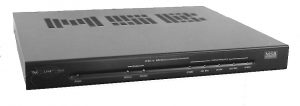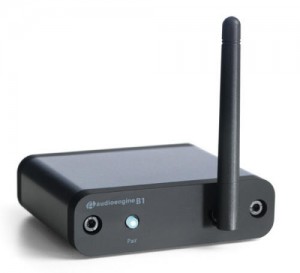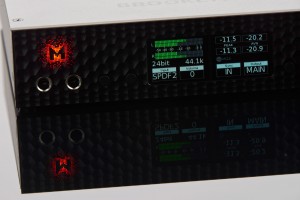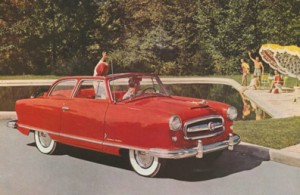The last page of a folder presenting the offer of the French Totaldac company reminded me of the way in which digital technology has developed in the last thirty-five years, in the context of the audio domain. It all started in the year 1980 when the fundamentals of the Red Book CD-CA standard were published. Since that moment, two things have been emphasized that were supposed to make it different from the so-far dominant standard (i.e. the LP record): convenience and the fact that that it doesn't wear out while being played, as well as clarity of sound.
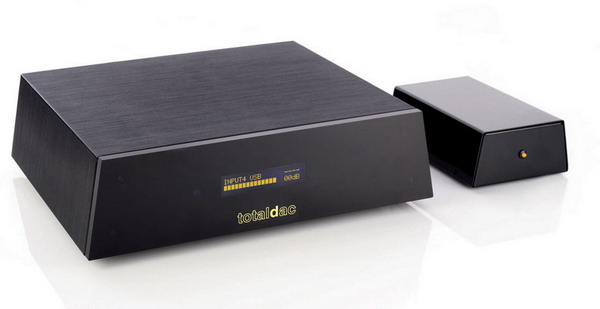
The first of these claims proved to be half-true only—it is known today that aluminum used for CD production oxidizes with time, because of which more and more original information must be supplemented by interpolation circuits in the player.
The claim concerning crystal clarity of the silver disc sound seems to be much more important. For many years after the year 1985, when the sales of vinyl discs were falling, the "Digital Recording" label was proudly placed on LP recordings, which was aimed at convincing consumers that although it was an old format, it was also improved. The information could most often be found on discs with classical music, but I also have it on my copy of Brothers in Arms album, which was the first band's album recorded on a digital multi-track cassette deck.
Today we know that it was exactly the opposite—the advantages of analogue recording and mixing were lost, and people failed to exploit the advantages of digital technology. The only claim which proved to be "prophetic" was the one concerning convenience and comfort. That was the first phase of the digital revolution. It was believed then that the revolution was a remedy to all aches and pains, and efforts were made to improve the sales of black discs by emphasizing how much they had in common with the new technology. As time passed, however, people came to their senses and regretted having thoughtlessly sold their vinyl disc collections.

For a long time, at least in the circles of people who are interested in high-quality sound (i.e. among audiophiles), the dominant standard is the one in which the model for "digital" sound (i.e. sound obtained from this type of signal) is the Long Play disc. If somebody wants to emphasize high quality of a player or a D/A converter, they say it produces "analogue" sound. Incidentally, it is similar in the case of D-class amplifiers—if someone wants to compliment them, people say that they sound "analogue". The term "analogue" is almost always associated with the turntable and the vinyl disc. It probably won't change, even if the best digital systems are taking one step further and are directly bringing us closer to the analogue master-tape, without distortions characteristic for the LP format.
The path which allows us to meet this aim appears to be fairly simple—at least now, when we already know what to look for. The most basic aim is maximum jitter reduction. Jitter is understood as a whole range of digital distortions caused by imprecise signal clocking—both at short intervals, i.e. within a given impulse, as well as within longer time intervals. Jitter can be caused by many different factors, e.g. a low-quality clock, insufficient power supply of the clock and digital circuits, inadequate transmission cables (digital interconnects), insufficient shielding, etc. All of these factors have recently been significantly reduced and for the first time it can be said that digital sound sounds "analogue" without blush on one's cheeks, caused by such apparent abuse.
The French Totaldac company run by Vincent Brient proposes its own method of digital signal conversion. It is one of just a few (!) audio manufacturers that have constructed their own digital-to-analogue converter—and it's not about a device, but a converter. Almost all the remaining manufacturers use ready-made chips produced by one of the following specialist companies—ESS Technology, Burr Brown, Crystal or Wolfson. The exceptions that must be mentioned here are: dCS with their Ring-DAC and MSB Technology (read in Polish HERE. Now it is also Totaldac. In this respect, the French company resembles MSB: its converter is simply a set of ultra-precise Vishay resistors, switched in integrated circuits. It is impossible to build a more precise DAC system. However, this is not everything that can be done in this field. Vincent proposes a few levels of sophistication based on a basic "brick", i.e. the DAC d1-single.
SETUP/UPGRADE
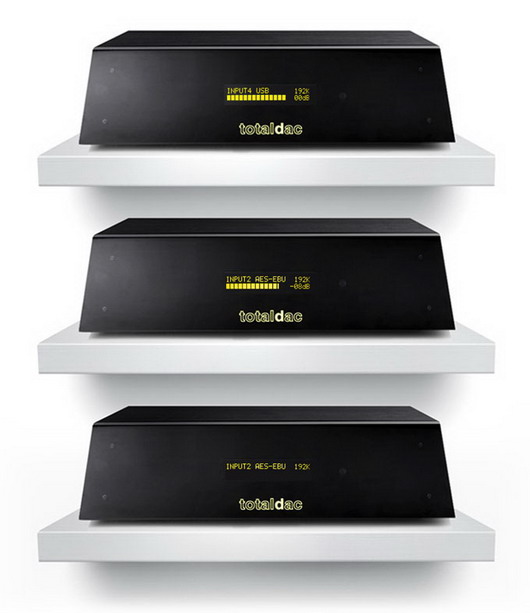
A SINGLE BOX: d1-single | d1-integral | d1-tube
A Totaldac system can be built up gradually, starting with a single device with an external power supply unit, i.e. the d1-single converter (price: €6960). If we equip it with an audio file player module, it will become an integrated file player called d1-integral and will cost €8400. There is also a d1-single version with a tube output—the d1-tube (price: €6950). This DAC features most of the solutions that we can find in all Vincent's more expensive systems. In the DAC, digital signal is loaded onto a FPGA chip, operating alongside the FIFO buffer (memory) which delays signal by about 10 ms. It is enough for signal overclocking and jitter minimization. However, it is still a single box with an external, small PSU.
A SINGLE BOX: d1-dual
The next step may be to double the number of resistor ladders in the appropriate D/A converter, which results in smaller quantization errors and lower noise, etc. This is how the d1-dual is created. We wrote about it HERE. It costs €9900.
TWO BOXES: d1-server + d1-dual | d1-server + d1-single/d1-tube
It is a variation of the company's complete digital source. The system consists of two boxes. The first one houses file transport and a circuit which re-clocks digital signal, with digital inputs, whereas in the other one there is a converter—one of three versions (single, tube or dual). The systems cost, respectively, €10 850 and €13 790.
THREE BOXES: d1- monoblock | d1-twelve
Finally, there are versions consisting of three boxes, with three external PSUs. The first of these versions is a system with an external circuit which re-clocks signal and two d1-dual converters operating as monoblocks. Instead of two resistor ladders per channel there are four per channel here. It is a fully balanced system.
On the very top there is a system which costs €29 500 (plus an extra charge for a file player system). It consists of a reclocker with digital inputs and two monophonic D/A converters. Instead of four, we have as many as six parallel resistor ladders per channel in them—the circuit is unbalanced. Thanks to the parallel connection, it was possible not to include any amplifying circuits and buffers on the output—signal from the DAC is immediately sent outside. A disadvantage of this solution is lower output voltage—instead of 3.1 V we have 1.4 V. If we are using an active pre-amplifier, there won't be any problem with that. This is the system that we tested.
Basic Totaldac systems offer a lot of options, such as a headphone output, a filtered subwoofer output, etc. The top d1-twelve model does not have them.
All signals are supplied to the main device ("reclocker"). Signal is split in it into two channels and sent to the monophonic DACs with the use of two AES/EBU digital cables. The company supplies its own, quite good interconnects of this type, but I used Acrolink Mexcel 7N-DA6300 cables. The monoblocs are also connected using two extra connectors—a digital BNC interconnect which synchronizes the clock signal and an RCA interconnect which is used to transfer control signals. The first cable is the most important one – in my system it was the Acrolink Mexcel 7N-DA6100, whereas the Oyaide DR-510 was used to transfer control signals.
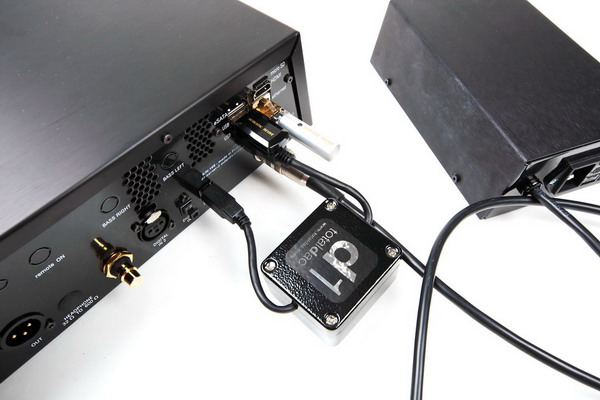
The system version which I obtained for the test had an installed file player. So, Vincent also sent me a router with a linear PSU, as well as a NAS and a set of cables, including his own Ethernet cables. However, I didn't use that option. I was interested in how the d1-twelve operates as a DAC with external signal from physical media: CDs, DVDs and Blu-ray Audio discs. Signal was sent to it from the Ancient Audio Lektor AIR V-edition player with the Philips CD-Pro2M transport, as well as from the multi-format Primare BD32 MkII player, which I used to play DVDs, DVD-Audio discs and Blu-ray Audio discs (signals up to 24/192). I also checked how the system behaves with signal sent from a computer through a USB input, including DSD signal. As regards DSD, Vincent made it possible to convert all PCM signals to DSD, which can be changed in the device menu. I did not use that option, as I think that every type of signal should be converted in its original form. Then, it sounds better to me.
Recordings used during the test (a selection):
CDs:
- Dżem, Zemsta nietoperzy, Pronit/Remaster Damian Lipiński, CD-R + DSD (1987/2015).
- Ed Sheeran, X, Warner Music UK/Warner Music Japan WPCR-15730, CD (2014); review HERE.
- Lisa Gerrard, The Silver Tree, Sonic Records SON212, CD (2006).
- Mark Hollis, Mark Hollis, Polydor 537 688-2, CD (1988).
- Mel Tormé, Sunday in New York, Atlantic/Warner Music 79684-3, "Jazz Best Collection 1000. No. 4", CD (1966/2012).
- Miles Davis, In A Silent Way, Columbia/Mobile Fidelity UDSACD-2088, "Special Limited Edition, No. 1311", SACD/CD (1969/2012).
- Oscar Peterson, Unmistakable, Sony Music/Zenph Studios 951702, "Zenph Re-Performance", CD (2011).
- Perfect, Unu, Tonpress/Remaster Damian Lipiński, CD-R + DSD (1982/2015).
- Piotr Anderszewski, Piotr Anderszewski at Carnegie Hall, Virgin Classic 267291 2, 2 x CD (2009); review HERE.
- Sonny Rollins, Saxophone Colossus , Prestige/Analogue Productions CPRJ 7079 SA, SACD/CD(1956/2014).
- Sonny Rollins, Saxophone Colossus, Prestige/Victor VICJ-60158, XRDC (1956/1998). Blu-ray Audio discs:
- John Coltrane, A Love Supreme, Impulse/Universal 3735663, High Fidelity Pure Audio Blu-ray, PCM 24/96 | Remaster 2008.
- Queen, A Night At The Opera, Island/Universal 3732771, High Fidelity Pure Audio Blu-ray, PCM 24/96 | Remaster 2011.
- Franz Shubert, String Quintet C major D 956, wyk. Auryn Quartet, Tacet B110, Pure Audio Blu-ray, PCM 24/96 (2014).
- Ellen Sejersted Bodtker, Sonar, 2L 2L51SABD, Pure Audio Blu-ray PCM 24/96 (2008).
- Opeth, Pale Communion, Roadrunner Records RR757375, Blu-ray Audio, PCM 24/96 (2014)
- Depeche Mode, Delta Machine, Blu-ray Audio 24/96 (2014) [w:] Live in Berlin, Sony Music | Columbia 5035642 (2014).
Do you know what escape velocity is? In Stephen Hawking's book entitled The Universe in a Nutshell, the phenomenon is illustrated with a suggestive drawing of an enormous steampunk cannon which fires a ball on one of the pages. The ball falls on the next page, apparently not having reached escape velocity. In a nutshell, it is about escaping so fast that the escape is successful. In Hawking's words: "If […] the initial speed of a body is greater than some critical value—the so-called escape velocity or the first cosmic velocity, the pull of gravity won't be able to hold the body which will escape into space" (Stephen Hawking, The Universe in a Nutshell, quoted from the Polish translation: Wszechświat w skorupce orzecha, Poznań 2014). Just to remind you: the value equals ca. 12 m/s on the Earth.
The Totaldac d1-twelve belongs to the elite group of devices which seem to escape both the gravity of their mechanical nature and of our habits. It is a thought which came to my mind immediately after I used the tested DAC to listen to a few recordings whose sound I was mostly curious about. The follow-up listening sessions and other discs only made me confirm myself in this conviction. Two weeks earlier I had achieved a very similar effect with the Naim Statement amplifier, just like a year ago – with the TechDAS Air Force One turntable and the dCS Vivaldi digital system.
The tested DAC is closest to the Naim Statement amplifier, because its sound is exceptionally pure. It is REALLY pure, not dried or contoured. It is also characterized by excellent resolution and selectivity. In fact, all other digital systems, perhaps except for the abovementioned dCS, sound a little bit colored and more dirty. I am talking about top products with which I could happily live, also including the Reimyo DAP-999EX Limited DAC with the CEC TL0 3.0 transport and the Accuphase DP-900/DC901 transport/DAC. The "dirt" that I have mentioned consists of thickening virtual sound sources a little and blurring them. I hadn't realized that until I heard the Totaldac d1-twelve which resembles the CD Ancient Audio Lektor Grand SE player in this respect.
At first sight, this is not a "Wow!" type of sound. Such sound, in my perception, is characteristic for the TechDAS turntable and the dCS player, both of which surprised me since the very first listening session. At first, the d1-twelve sounds a little lighter than both my Ancient Audio Lektor AIR V-edition player, and the Reimyo and Accuphase converters. It seems that its tonal balance is raised and that accents have been moved up. However, after a moment of accommodation, it can be heard that it is simply more natural sound that is more true in the sense that it isn't "made up". I am sure that almost all other converters add something from themselves in the lower midrange and upper bass, because of which their sound is fuller and perceived as "live" music. However, in reality, if a constructor is not able to render true information which builds up a more reliable musical message, he or she emphasizes a segment of the range and "voilà!"—we have dense sound, but only seemingly so.
Totaldac relieves music of the act of reproduction—that is, it seems so. As in the case of anything else, this can also be improved, this is what progress is about. However, as for today, it seems that the d1-twelve operates as if it sets the musical message free. It is ostentatiously free from any dependence, not attributed to anything else apart from itself. Recordings gain depth, both within the sound of the given instrument or vocal, but also within the sound stage. Everything is more true with the DAC, more distinct and normal, through a reference to the experience connected with concerts.
It is hard to define the tonality of the device, as there is everything that we expect in it. It is easier to say what makes us like other perfect digital products so much, because the d1-twelve nicely shows these actions. The first one refers to the abovementioned lower midrange which is weighed down a little, because of which the musical message is fuller and denser. At such high resolution as here it is not necessary—the act of weighing down and filling up is carried out thanks to a larger amount of information and its faster and more precise presentation. The warmth and saturation in audio products can be achieved by coloring sound or withdrawing the attack, etc. In my opinion, all these actions are justified and produce excellent effects. Warmth can also be obtained by aiming at the lowest possible distortion and noise, and mainly by minimizing jitter. It is more difficult to do, but in the last two years such a way of thinking has been more and more frequently adapted, also in the case of cheaper products. Thanks to this, new Accuphase products sound so well.
The tested converter does it in a yet different way. Clarity, resolution, signal rise speed, minimum jitter—each of these elements on its own and all of them together let us get more music. It is because elements that have so far been covered become important or, if these elements have been apparent, they are also ones that do not interact with other elements. We can now hear very well that the guitar in the acoustic version of Personal Jesus was recorded directly from the line and sound from the microphone was only gently added to it, whereas Dave Gahan's voice was recorded separately in a different room. Some echo was added to it and a track operating on two planes was created. Most systems bring the Depeche Mode vocalist to the foreground. He is taken out of the specific acoustics of a small, tiled (this is what it sounds like) room, which is later hard to forget. In the case of the best digital sources, the vocal is far away at the background, where it should be, whereas the guitar is closer. However, even in the case of these devices, the duality is not as clear as with the French converter. Thanks to this, the recording has taken on a new dimension—I have been listening to it for years, also during tests, but now it intrigued me, aroused my interest.
I have recalled a not-so-audiophile recording to make it clear that we are talking about a structural change, not only about the way in which the converter "treats" individual recordings. It's an extension of the field of view, not only an instance of cleaning one's glasses. I think that the difference is well demonstrated in the case of the new remaster of Sonny Rollins's Saxophone Colossus album (Prestige LP 7079, 1956).
I am not for thoughtless, automatic purchasing of newer and newer recording versions. Technological progress, both on the part of the recording studio (i.e. thanks to new techniques of analogue-to-digital conversion and new remastering methods), and on the part of the physical medium (i.e. the method of its creation), does contribute to a real improvement of sound (at least in most cases). Therefore, I sometimes buy titles that are most important to me in a new version, especially in the case of a whole new series. I am interested in the music included in them and in the case of many new issues there is simply MORE of it on the discs.
Such an exceptional case in which I "subscribed" to all available titles is the Analogue Productions "Prestige Done Two Ways" series. There are going to be 50 issues – 25 stereophonic and 25 monophonic ones. I already have some of them, their different issues, but this is a series which is really worth having.
Saxophone… belongs to the canon of jazz and has been reissued many times. For many years, the digital model for me was the issue from the year 1998, prepared by Alan Yoshida and Akira Taguchi in the JVC Victor studio and released as an XRCD (20 bit/K2). A new version was prepared in the Cohearent Audio facility by Kevin Grey for Analogue Productions, in the form of a hybrid SACD/CD. Reading from the CD layer is therefore a bit worse due to the presence of a "half-transparent" SACD layer in front of it.
In spite of this, the sound of the new version is much more communicative and has a better definition. The XRCD shows larger virtual sources, with a stronger basis. It is what people like, me being no exception. However, in the case of Mr. Brient's DAC it is audible that this is a bit "plastic", artificial sound. The new version is purer and the sound stage is set much deeper into the background, which is very important in the case of monophonic recordings. The dynamics is also better differentiated and, in the case of the XRCD—averaged; everything there is strong and "in-the-face".
This is what makes the Totaldac d1-twelve different from other converters, perhaps except for the Vivaldi dCS and the Lektor Grand SE that are most similar to it. It presents a musical event as something natural and normal —not as an act of creation, but interaction between the sound of an instrument and the acoustics that modifies it, and, in the recording's broader plan, between all the sounds.
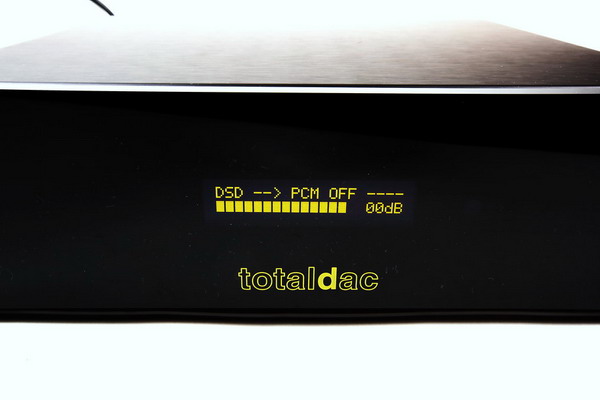
Despite so much information, the sound of the tested "boxes" isn't brightened up, neither do they emphasize the treble. I was actually surprised with how densely and warmly they present vocals that are not very well recorded, because of which they cause standard problems—Ed Sheeran's vocal from the album X, vocals of different artists from the album For The Masses and even Mel Tormé's vocal from the album Sunday in New York. The energy of each sub-range, also of the treble, is very high, to the point that everything "vibrates". When Max Roach strikes the edge of a drum on Rollins's album, it is a strong and pure strike—it is stronger and more equivocal sound than usual. If a recording is dirty and compressed, it sounds more gently than usual.
Summary
My world of sounds, my world of music revolves around "physical" formats, headed by the Compact Disc and Long Play. For me, the model is an analogue master-tape played on a high-end cassette deck—both CDs and LPs sound very different from it. Intuitively prepared DSD files are closest to it. They are best if they are double- or even quad-speed DSDs. To confirm what I am saying, it is worth looking at a new article of the editor-in-chief of "Positive-Feedback Online", David W. Robinson: Impressions: The First Batch of Yarlung Records Quad DSD (DSD256) Transfers. SACDs are also coming closer and closer to this ideal. For me, however, CDs and LPs sound good enough.
If I can use such an excellent tool as the Totaldac d1-twelve, it is hard to complain about anything. Would I change anything in this sound? Well, if I had the power, I would add some more "foundation" to it. I don't know how, I don't even know if it's possible, but the colorings that we get with other excellent converters make sound seem lower. It is just masking, but I subjectively perceive it in this way. Perhaps one more thing—at the very bottom, somewhere at 30Hz (I can also hear it higher in the range, but I think that the source is at that very point), the bass is a bit less differentiated than the rest of the range. However, nobody's perfect, are they? Anyway, the range is better than anywhere else.
However, it is just speculating. Here and now, the sound of the French converter appeals to the whole of me, to every corner of my musical universe. It introduces a new perspective into recordings, freeing them from a spell cast by other digital systems. Its range is extremely stretched in both directions, although we do not perceive this in such a way at all. It is because we are not talking about a magician's tricks here, but about reliable sound, very close (generally speaking) to the sound of analogue master-tapes. It is an outstanding digital system, one of the best digital sources in the world that I have ever known, perhaps alongside the Vivaldi dCS and the Lektor Grand SE.
DESIGN
All Totaldac devices have the same casing and the same PSU. The only difference concerns the arrangement of electronic components that are placed on the boards inside. The casings look like low trapeziums with an acrylic front panel and aluminum casing. A piece of vibration-damping material has been attached to the upper panel (on the inside). At the front there are yellow OLED displays which show the chosen input, input signal sampling frequency and volume—both on a bargraph and alphanumerically (in dB) with the level of 0.0dB (in the case of a lack of dumping). Volume is changed in the digital domain, in a 64-bit DSP circuit. It works very well, but if you want to achieve absolutely top sound, I would encourage you to use an external active preamplifier and leave the settings in the Totaldac at 0.0dB.
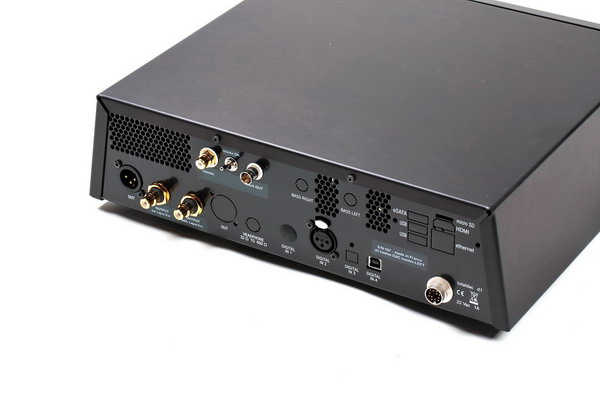
The rear panel is very similar in all Totaldac devices—the only difference concern the arrangement of elements. In the reclocking circuit there are all digital inputs including the Ethernet input. If we do not use the USB input, it is worth closing it with a filter offered by the company, which I did. What is more, I placed the Acoustic Revive RLT-1 LAN Terminator filter in the unused Ethernet input and the Acoustic Revive USB filter in the other unused USB input.
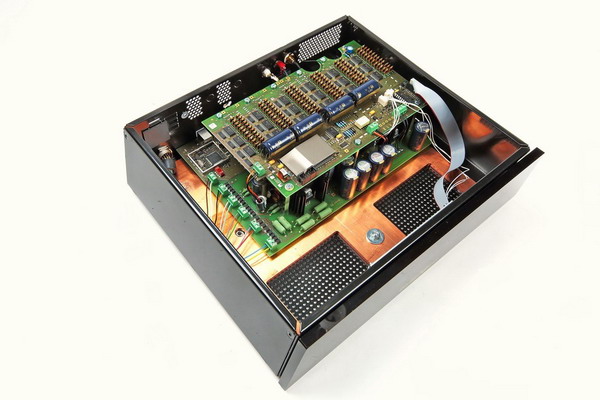
There are two AES/EBU inputs (110 Ω) in the first box. These are the inputs that we use in the monoblocks. There are as many as three analogue outputs—two RCA and one XLR input. The latter one is there just for the sake of convenience—signal is unbalanced on them. So, one of the RCA outputs should be used. There are two, because the first of them is classic, with a decoupling capacitor, and the second one does not have a capacitor. The second one is, as Vincent says, experimental. There is bias signal present on such an output, i.e. DC voltage which polarizes signal. If there is a transformer or a capacitor on the output of the next stage, it is worth trying it out, because in this way we get rid of one element from the signal path. In my system, the Soulution 710 amplifier equipped with very advanced security systems refused to collaborate with this type of output and the test was carried out with the output coupled using a capacitor.
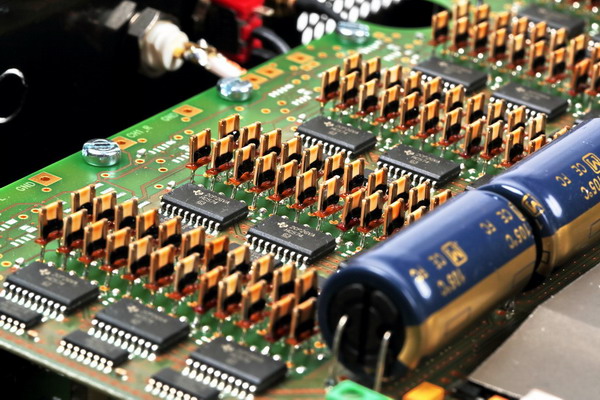
The inside is similar in all the devices—there are two large boards placed one above the other. On the upper board there are resistor ladders with integrated circuits that control them, as well as a large DSP chip. The whole section is coupled (using a matching transformer) with the board below on which there are power supply and output circuits. In the reclocking device, the board with the DAC is not assigned. The boards are not mounted directly to the bottom, but to a thick, copper panel.
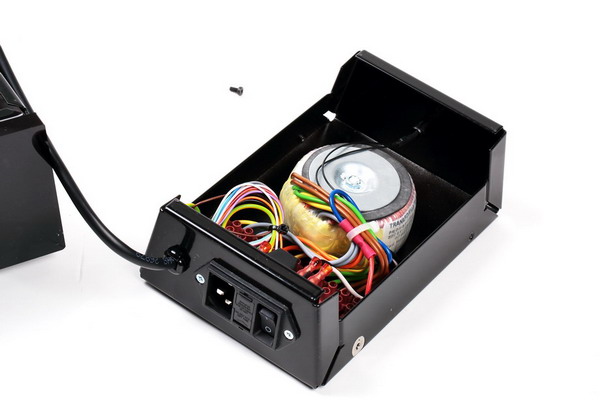
In the power supply units there are medium-sized toroidal transformers with a lot of secondary windings—the converters and the "reclockler" have a lot of separate supply lines. The PSUs are connected to the devices using quite long cables with DIN connectors. To tell you the truth, I think that this problem should be solved in a different way—there should be a fourth identical casing in the system, in which there ought to be three PSUs. That would look better, the system would be easier to set up and only one expensive AC power supply cable would be sufficient. In the existing system, I had to use two Acrolink Mexcel 7N-PC9500 cables and one Crystal Cable Absolute Dream.
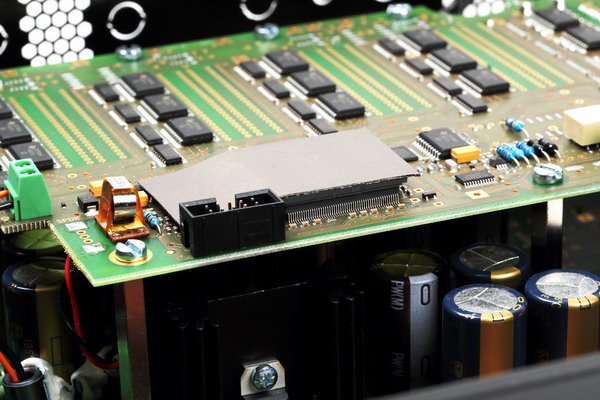
The devices look as if they have been designed with the thought of collaborating with the CEC TL1 transport in mind. I think that with its new version, TL0 3.0, they will constitute a reference system. This is how Vincent is going to present the d1-twelve in the future. The device is controlled using a small, plastic and ugly remote control.
Price (at the time of the test): €29 500
Totaldac
[email protected]
www.totaldac.com
MADE IN FRANCE
Images by Wojciech Pacuła | totaldac











